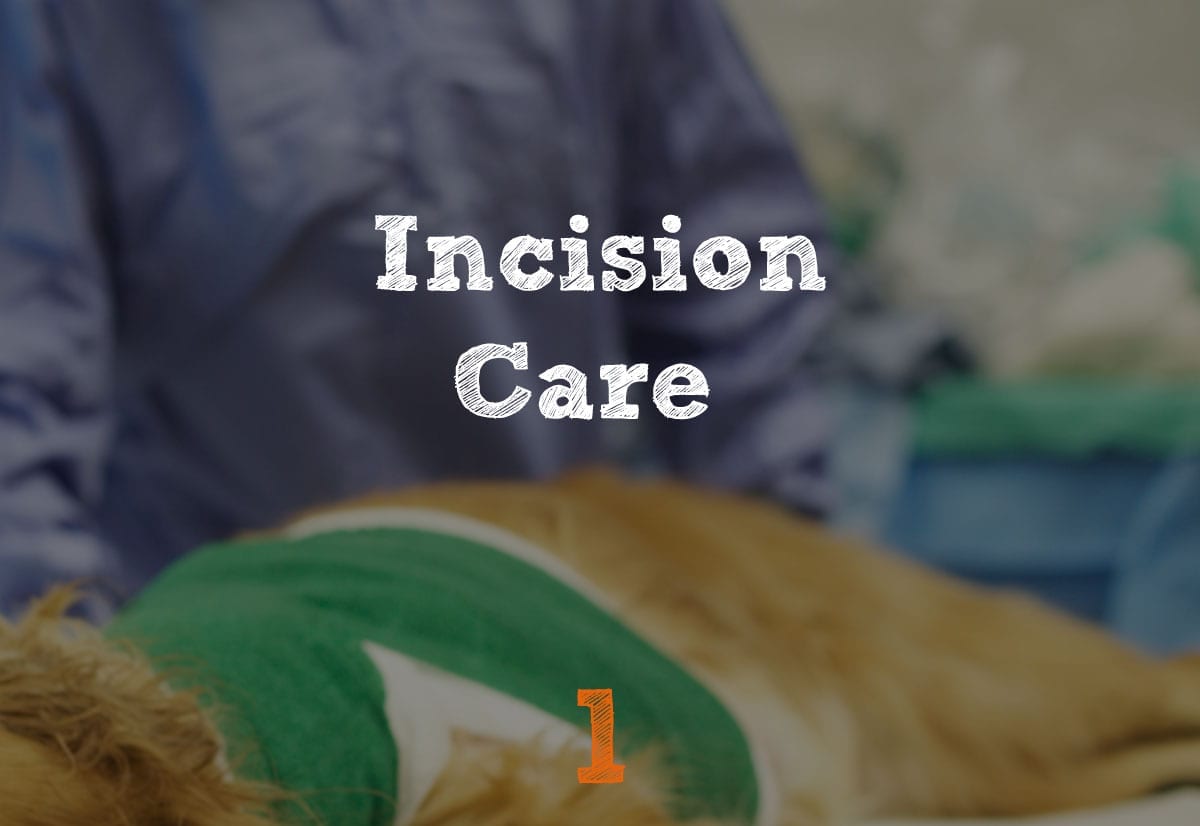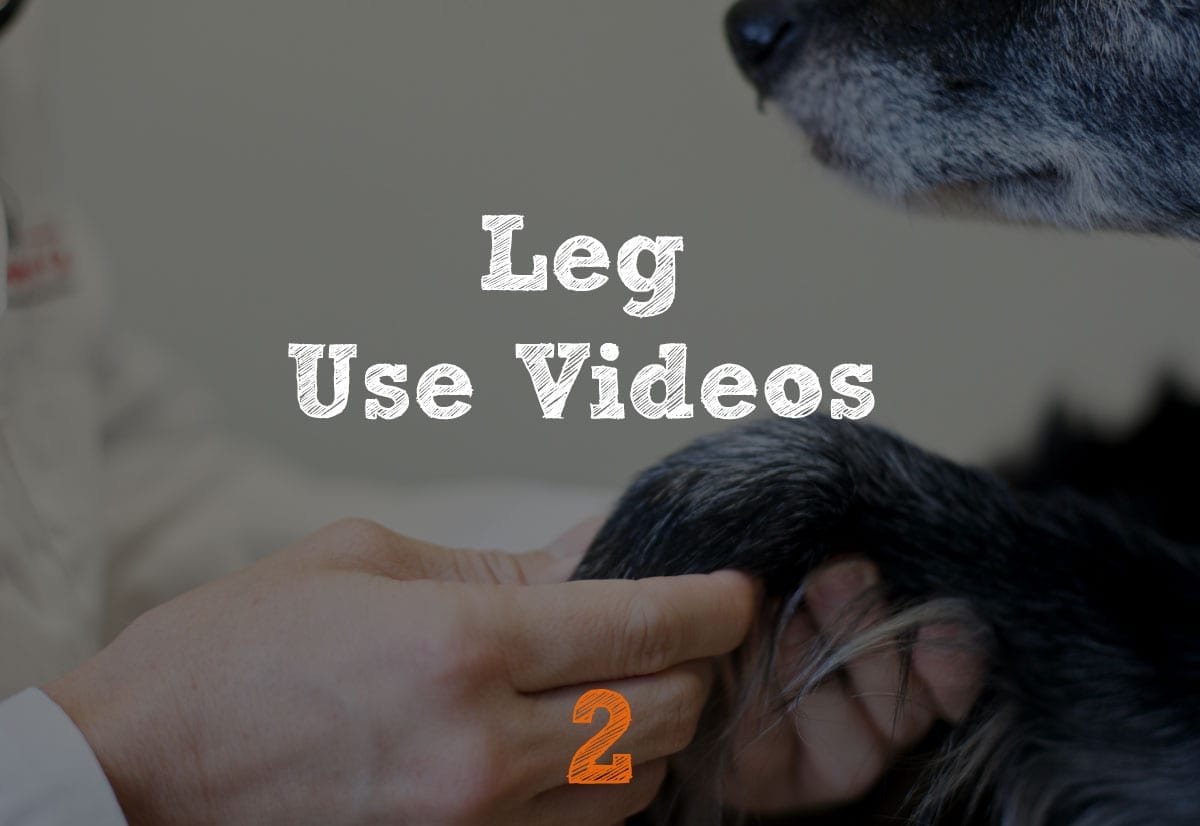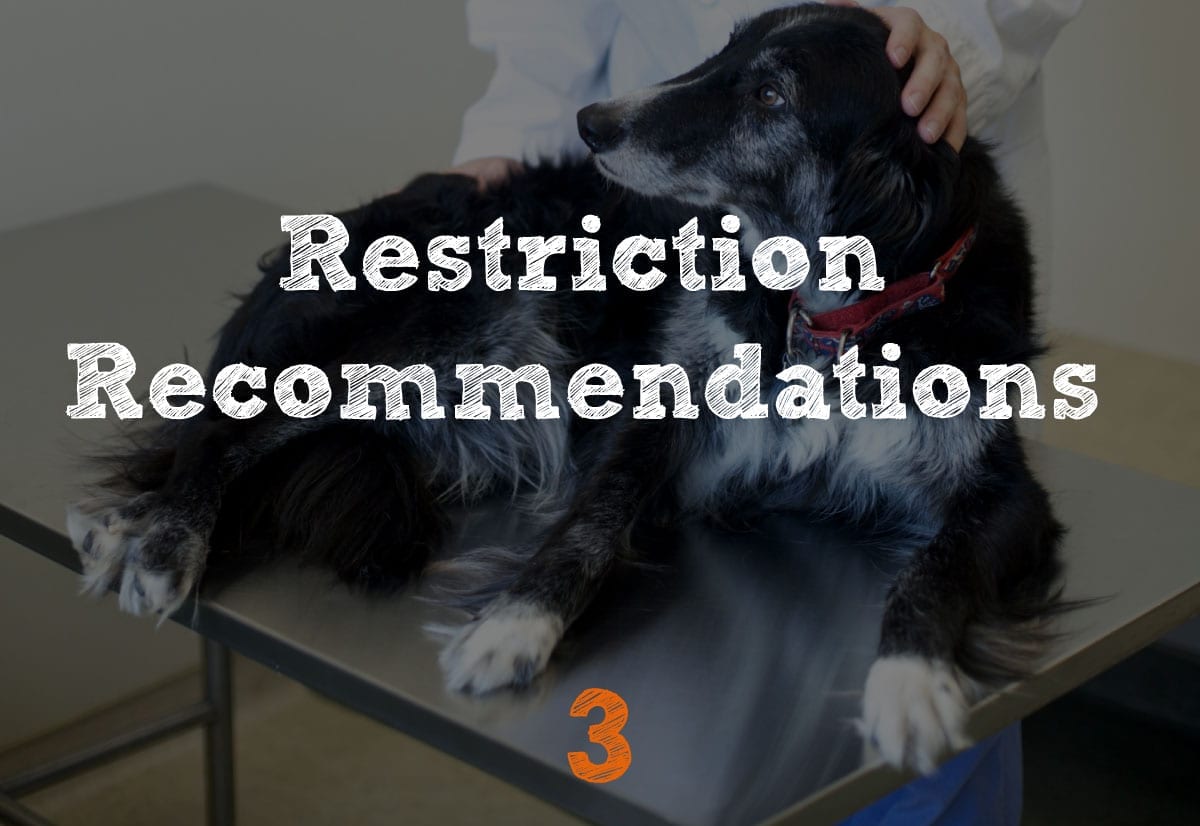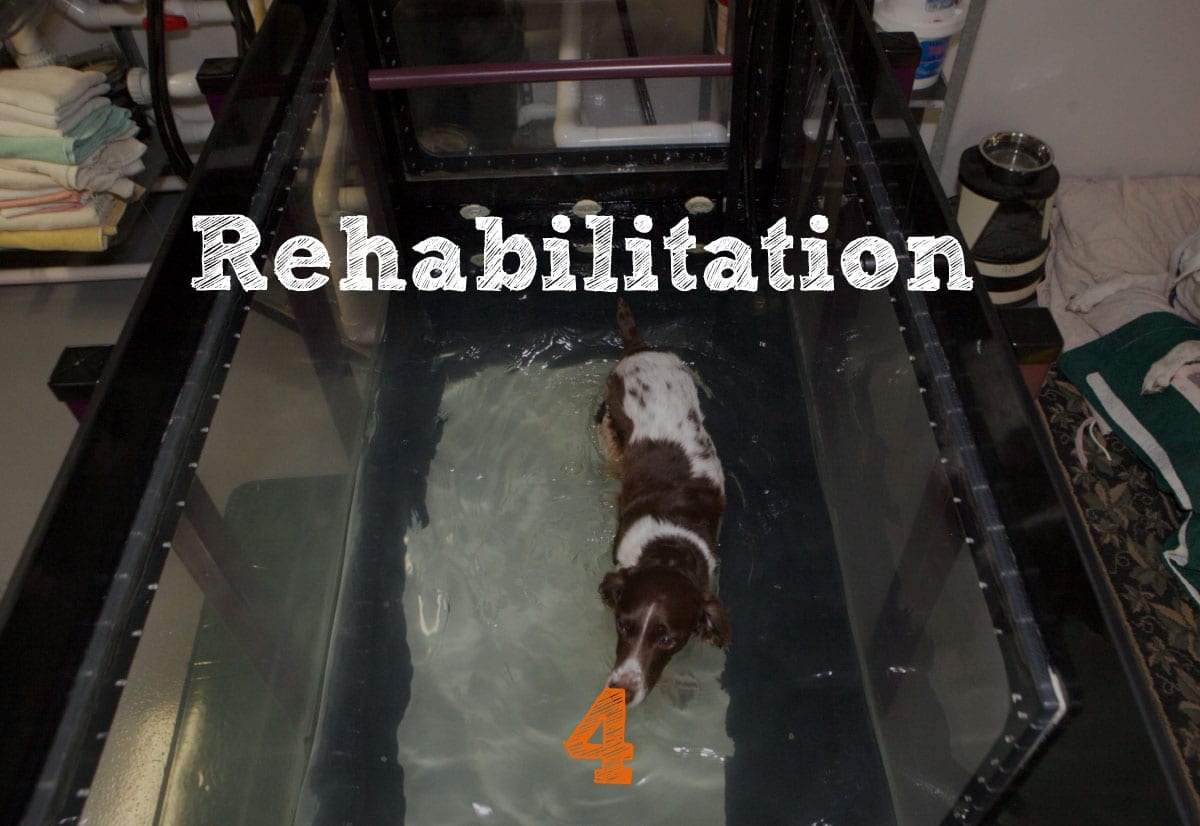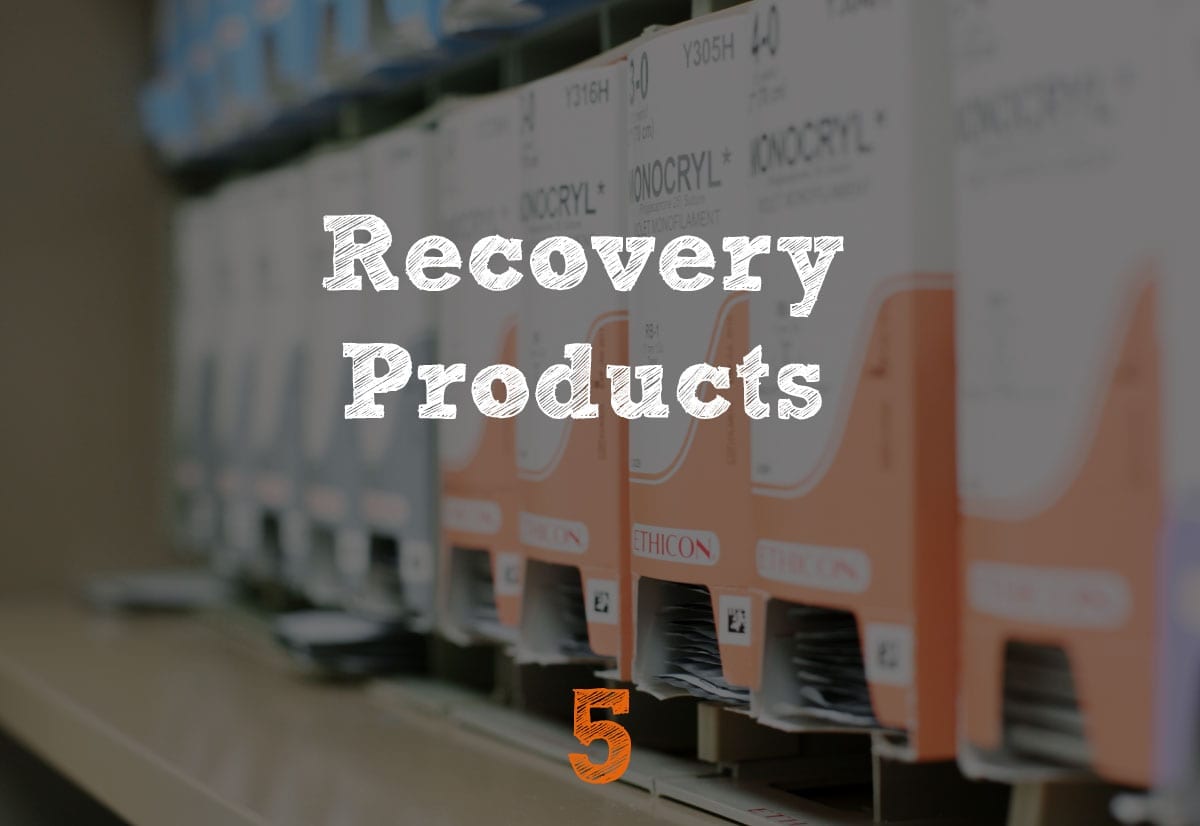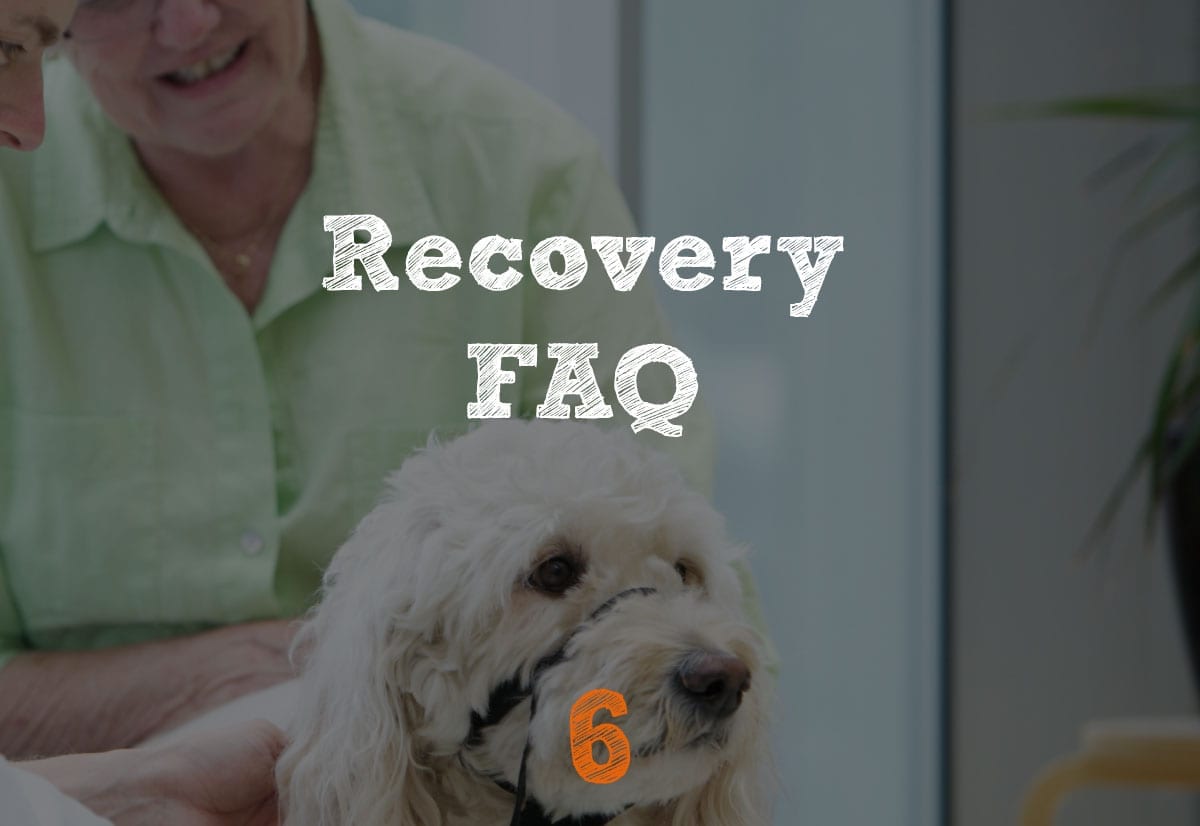TPLO Surgery Restrictions & Recommendations
During the first eight weeks, we are completely relying on the implants (plate and screws) to stabilize the surgery site. It takes a minimum of eight weeks for bones to heal and good scar tissue to form. This process can take longer in geriatric pets or those with other systemic health conditions. Please speak with your veterinary surgeon to find out their exact recommendations for post-operative restrictions. Below is a general guide for restriction recommendations and return to activity.
- Your pet should be confined to a kennel or small room until radiographs show good bone healing.
- Any running (inside or outside), jumping on or off furniture, or playing could lead to severe complications.
Weeks 1 and 2
- Controlled leash walks.
- Walks are best performed on a short leash. Go slowly at first to help gradually improve strength. Walking slowly may help encourage use.
- Walks can be done three to five times per day for five minutes at a time for elimination purposes.
- Using a sling or folded bath towel under your dog’s belly can be used for support when walking on slick surfaces such as tile or wood floors, and even on other surfaces if they are unsteady on the surgical limb. The sling can also be used to help slow your pet’s pace down if they are pulling hard on the leash.
- Passive Range of Motion exercises (see Rehabilitation link) can be performed three times daily for 10-15 repetitions each.
- No off-leash activity.
*If your pet fails to begin using the surgical leg during the first two weeks, please contact your veterinarian.
*A recheck should be performed at two weeks so the incision site can be evaluated. If sutures or staples were placed to close the skin, they are typically removed at the 10-14 day recheck.
Weeks 3 and 4
- PROM can be reduced to twice per day.
- Continue ice therapy as needed if your pet seems sore after walking/exercise.
- Increase leash walks to about 8 minutes in week 3 and 10 minutes in week 4 as long as your pet is using the surgical limb.
- Incorporate the following exercises into leash walks as directed by your veterinary surgeon or rehabilitation therapist, to build strength and body awareness:
- Walk in large figure 8 pattern.
- Stepping slowly up onto and down off of a curb in an S pattern.
- Gentle inclines (a mild slope on a street or a driveway.)
- The following exercises can also help build balance and core strength. Perform these exercises on a non-slip surface, with 5-10 repetitions each.
- Gently nudge the hind end from side to side while standing.
- Sit to Stand exercise – have your pet repeatedly sit down, then stand up.
- Three-Legged Standing Exercise – Have your dog in a standing position, then lift one leg off the ground at a time for 10 to 15 seconds (alternate with all but surgical leg.)
- No off-leash activity.
Weeks 5 through 8
- Icing and heat-packing can be discontinued.
- Continue performing the previously mentioned exercises.
- Week 5 increase length of walks up to 12 minutes up to 3-5 times a day.
- Week 6 increase length of walks up to 15 minutes up to 3-5 times a day.
- Week 7 increase length of walks up to 18 minutes up to 3-5 times a day.
- Week 8 increase length of walks up to 20 minutes up to 3-5 times a day.
- No off-leash activity.
Weeks 8 through 12
Radiographs will be taken at 8 weeks to confirm appropriate bone healing. Only after the x-rays confirm bone healing should your pet be allowed to return to running and jumping. Assuming the tibia is healing:
- Continue performing the previously mentioned exercises.
- Continue to gradually increase the duration of the walks.
- Gradually introduce off-leash activity, starting week 9 with 5 minutes of off-leash activity 3-5 times a day, week 10 up to 10 minutes of off-leash activity 3-5 times a day, week 11 up to 15 minutes of off-leash activity 3-5 times a day, and week 12 up to 20 minutes of off-leash activity 3-5 times per day.
Ready to move on to the next step?
OUR CLIENTS

